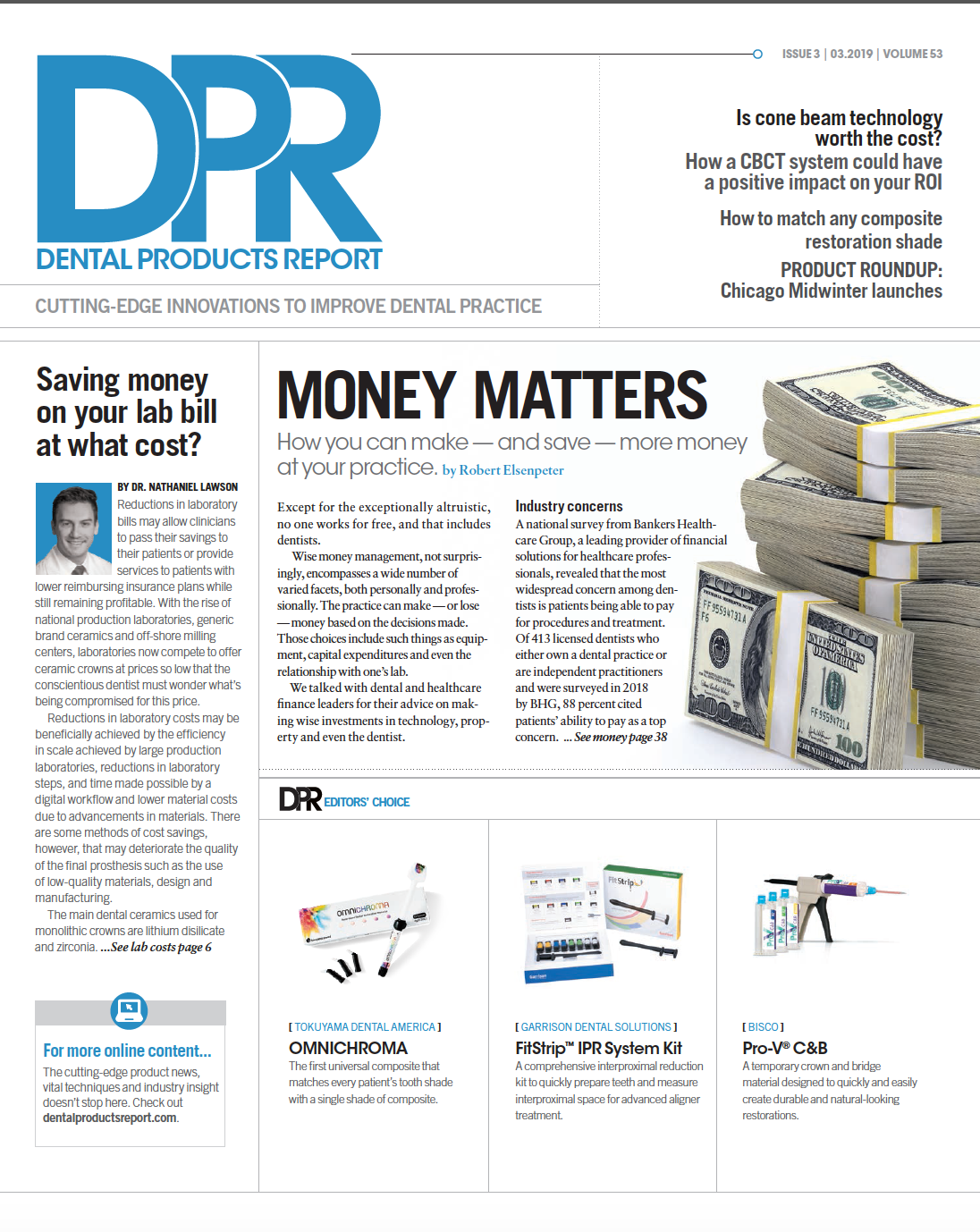Key elements missing from group software
Technology continues to improve, but vendors are still lacking these three critical opportunities.

Recently, I’ve been helping a larger specialty group research and evaluate various DSO and dental group software vendors. We’ve been looking for new practice management and clinical software that can support multi-location growth, help to streamline administrative operations, provide better cash flow, improve clinic operations and patient care, incorporate a multifaceted electronic referral system and offer robust analytics. We also wanted all of this built on a next-generation technology platform that will support our needs for years to come. As we conducted in-depth vendor demos, I found that I was impressed by some features and functionality, but I came to the conclusion that other important functionality was sorely lacking.
From a billing and insurance standpoint, the vendors varied in terms of electronic claims and reimbursement; however, most of the vendors can handle multi-location insurance and billing fairly well. Where DSO and group software solutions fell short for the most part was in the clinical areas - especially when it came to EHR functionality. I kind of expected this would be the case, as I’ve been trying to get software vendors to recognize the importance of upgrading their clinical and EHR systems for the past few years. The fact that we still don’t have what I consider to be “next-generation” clinical and EHR functionality in most DSO and group software follows what I experienced in the medical software industry more than a decade ago - the vendors were long on practice management functionality but short on clinical and EHR functionality. As medical evolved and grew, so did software vendor EHR and clinical functionality.
Having evaluated a number of DSO and group software vendors, there were three main areas I’d like to focus on that had shortfalls. Note that there are numerous other EHR and clinical features not necessarily mentioned here that need to evolve as well. But, for the purposes of this article, we’ll focus on electronic prescribing, structured data and associated clinical notes and documentation, and electronic referral management.
More from the author: 5 tips for a successful software implementation
Electronic prescribing

All of the vendors that we looked at for a group did have the ability to send an electronic prescription to the pharmacy, but that’s where the electronic prescription functionality ended. Having worked with numerous electronic prescribing systems and vendors over the years, I’m aware that electronic prescribing can be a two-way street. In other words, there’s an ability for the software to also retrieve a patient’s medication information and history from the national clearinghouse system and incorporate those medications in the consolidated medication list. Also, this ability to include all medications the patient has, regardless of where they obtained it, makes for more accurate drug interaction checks.
Clinical notes and documentation
The ability to easily structure and retrieve clinical notes and associated documentation is key to a powerful EHR and clinical documentation system. Unfortunately, most of the EHR and clinical systems aren’t designed or structured to allow input of data and information in a discrete form. Notes are entered and saved more like a blob of text instead of separate data elements that are critical to reporting, analytics and changing insurance reimbursement models. Most medical EHRs allow this specificity of information to be entered in the database; however, except for one or two instances, group dental software isn’t there yet. It’s disappointing that I’ve not found the robustness of clinical information entry and retrieval that I’ve found in medical EHRs.
Trending article: Scheduling patients with non-participating insurance plans
Electronic referral management
One of the most critical needs for my client and specialty groups is the tracking and analyzing of referrals. Traditionally, this is all done on paper and via phone calls, so there’s really no way to easily track if and when the patient sees the consulting provider nor the outcomes of the referral visit. Phone calls and faxes are the standard communication between the consulting and referring offices, but in many cases this communication is poor, not timely and could be missing information.
With electronic referrals, the referring dentist could electronically send the referral along with the pertinent patient information, including images for that referral. In turn, the specialist could electronically send a referral letter back to the referring provider after completing his or her treatment, thereby closing the loop on the referral and simultaneously ensuring all treatments are documented.
Just as important as the referral tracking system is the ability for my specialists to use analytics in order to see where best referrals are coming from as well as the revenue history of various referral sources.
Bottom line
For the most part, the administrative, operations and billing functionality in DSO and group software is pretty good. Of course, these features have been around for years. There will always be room for improvement and new features will continue to evolve. What’s lacking in terms of functionality for DSO and group software is the clinical and EHR functionality that I would expect - that’s coming but not fast enough.

Product Bites – January 19, 2024
January 19th 2024Product Bites makes sure you don't miss the next innovation for your practice. This week's Product Bites podcast features new launches from Adravision, Formlabs, Owandy Radiology, Henry Schein Orthodontics, Dental Creations, and Dental Blue Box. [5 Minutes]